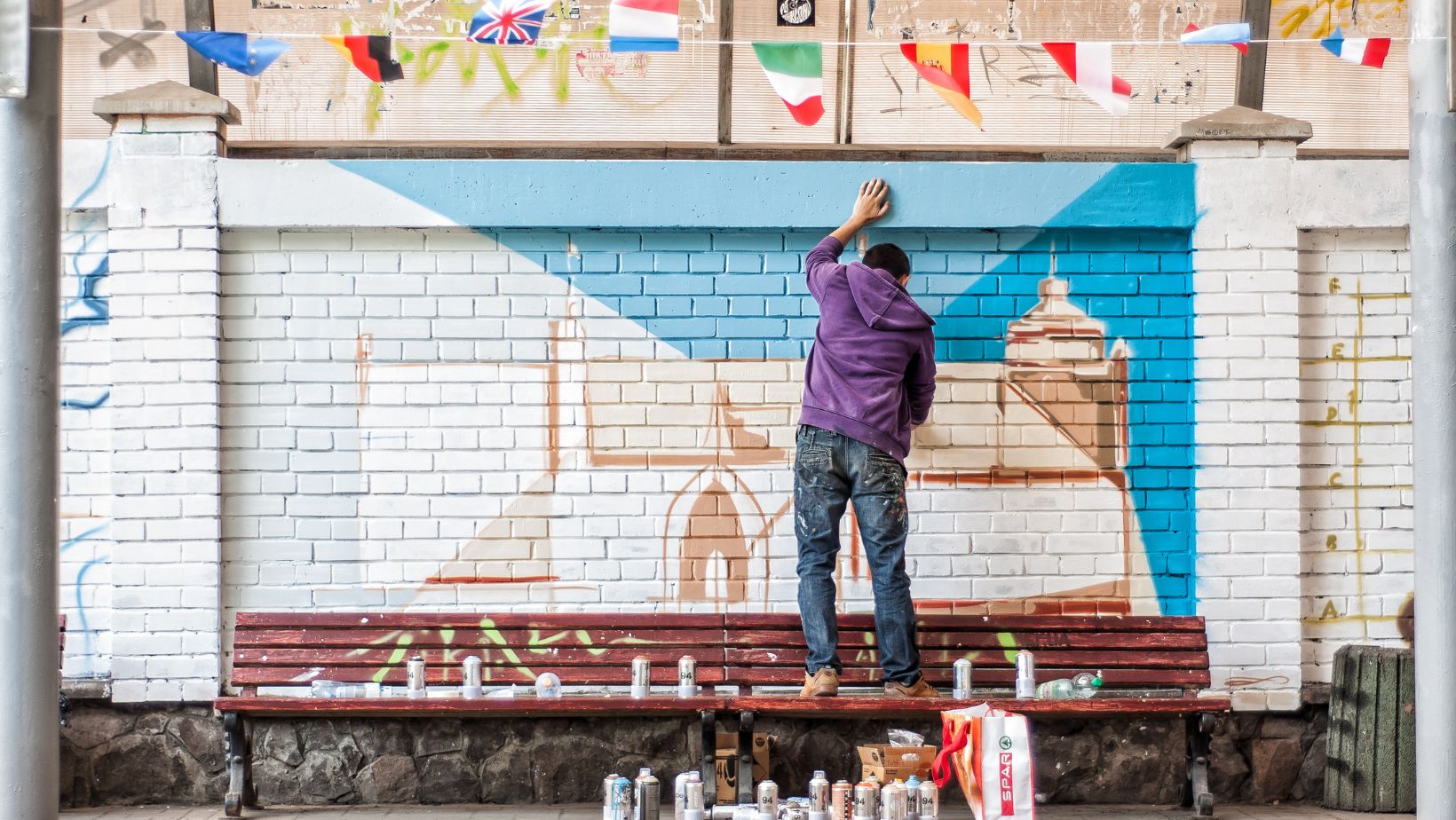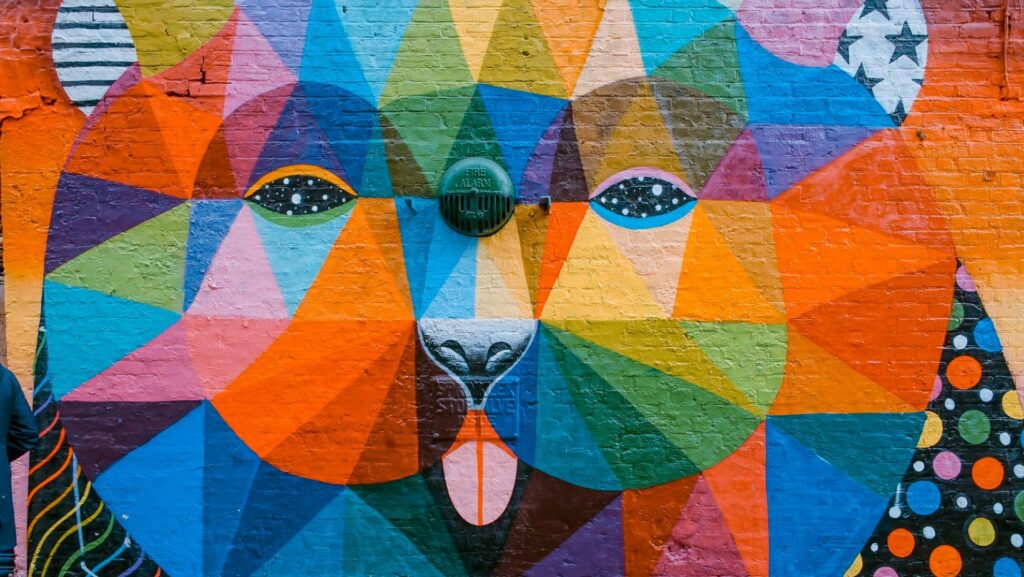When you think about art, what’s the first thing that comes to mind? Perhaps it’s a classic painting in a museum, or a modern sculpture in a city park. But what about mural wall art? This often overlooked form of artistic expression is making a comeback, transforming public spaces and adding vibrancy to our everyday lives.
Mural Wall Art
 Experiencing an unexpected surge, mural wall art—a once countercultural movement—has found new popularity within modern spaces. This rise is not a chance phenomenon; it’s a mindful reaction. Modern structures, from workspaces to homes, bid farewell to stark walls with the aid of this vibrant and engaging form of visual expression.
Experiencing an unexpected surge, mural wall art—a once countercultural movement—has found new popularity within modern spaces. This rise is not a chance phenomenon; it’s a mindful reaction. Modern structures, from workspaces to homes, bid farewell to stark walls with the aid of this vibrant and engaging form of visual expression.
This parametric shift from the public spaces to the walls of private buildings abounds with examples. Take for instance, LinkedIn’s vibrant San Francisco office, known for its sprawling mural displays, or Facebook’s artist-in-residence program, encouraging artists to splash their vision across its walls.
The increasing interest among architects and interior designers in murals, points towards an expanding trajectory for this art form. Specifically, their use in businesses reflects a shift in corporate mentality, aligning spaces to the company’s ethos. They add an intriguing visual element, creating a pro-creativity environment that companies seek to foster.
The Transformation of Public Art
 Historically, public art has undergone a radical transformation, influencing not only the aesthetics of urban landscapes but also sparking valuable social dialogue. Turning bleak urban walls into canvasses reflects this shift. Murals, being one of the most popular types of public art, indicate the democratization of art, less constrained by galleries and more accessible to the public eye.
Historically, public art has undergone a radical transformation, influencing not only the aesthetics of urban landscapes but also sparking valuable social dialogue. Turning bleak urban walls into canvasses reflects this shift. Murals, being one of the most popular types of public art, indicate the democratization of art, less constrained by galleries and more accessible to the public eye.
Designing a mural isn’t a slapdash process, it’s an artistry that’s developed and refined over the years. The evolution of these techniques has expanded the potential of mural art, allowing artists more freedom in their creations. Spray paint, for instance, became popular in the 1960s and ’70s with the rise of graffiti, giving artists the ability to create fine lines and detailed shapes. Modern murals also incorporate digital design, enabling artists to experiment with complex compositions before applying them to the wall.
Beyond aesthetics, murals have a direct societal impact. They possess the power to transform and gentrify neighborhoods, influencing societal perceptions and setting insinuations about the area’s culture.
The Impact of Mural Art on Communities
 Transitioning from a purely artistic endeavor, mural art, in recent years, illustrates its societal relevance on multiple levels. It shapes community identities, fosters cultural understanding, and opens dialogues on pivotal issues. Community identity and the role of mural wall art align perfectly. A mural, reflecting local history or ethos, resonates with inhabitants, fostering a sense of belonging. Take, for instance, the iconic ‘Haring Wall’ in Amsterdam, Netherlands. Painted over 30 years ago by the renowned artist Keith Haring, this colossal mural surfacing on the facade of a local museum, envelops a ‘positive vibe’ amongst locals, reinforcing their community identity.
Transitioning from a purely artistic endeavor, mural art, in recent years, illustrates its societal relevance on multiple levels. It shapes community identities, fosters cultural understanding, and opens dialogues on pivotal issues. Community identity and the role of mural wall art align perfectly. A mural, reflecting local history or ethos, resonates with inhabitants, fostering a sense of belonging. Take, for instance, the iconic ‘Haring Wall’ in Amsterdam, Netherlands. Painted over 30 years ago by the renowned artist Keith Haring, this colossal mural surfacing on the facade of a local museum, envelops a ‘positive vibe’ amongst locals, reinforcing their community identity.
Mural wall art, thus, transcends its aesthetic nature to become an agent of social transformation. Its impact on communities unfolds through its dynamic roles as an identity marker, cultural ambassador, and social commentator.
Maintaining and Preserving Murals
Mural wall art isn’t just about beautifying spaces – it’s about creating dialogue, shaping community identities, and reflecting our shared history. It’s a powerful medium that speaks volumes, telling stories that might otherwise be overlooked. But for these stories to continue resonating, it’s crucial to maintain and preserve these works of art. With time and exposure to elements, murals can fade or deteriorate. By investing in their upkeep, we’re not just preserving art – we’re safeguarding our cultural heritage, our social commentaries, and our community identities. So next time you walk past a mural, take a moment to appreciate it. Understand its story, its impact, and the vital role it plays in our society. After all, mural wall art is more than just paint on a wall – it’s a reflection of who we are.

